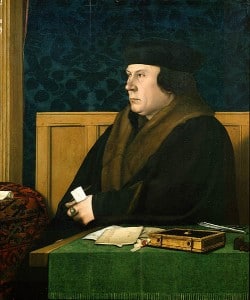 On 30th April 1536, court musician Mark Smeaton was taken to Thomas Cromwell’s house in Stepney where he was interrogated. Within 24 hours he had confessed to making love three times to the Queen.
On 30th April 1536, court musician Mark Smeaton was taken to Thomas Cromwell’s house in Stepney where he was interrogated. Within 24 hours he had confessed to making love three times to the Queen.
It is likely that the note that Henry VIII received at the May Day joust, the next day, contained details of Smeaton’s confession.
There is an intriguing story about Mark Smeaton and Anne Boleyn in The Spanish Chronicle (Cronica del Rey Enrico), also known as The Chronicle of King Henry VIII of England. This is a rather gossipy chronicle and one historical source to take with a rather large pinch of salt, but the story is interesting nonetheless.
It concerns a certain musician, a cupboard, a jar of jam, a bed and a certain queen. After reporting how Anne had fallen in love with Smeaton, the Chronicle goes on to say:
“One night, whilst all the ladies were dancing, the old woman called Mark and said to him gently, so that none should overhear, “You must come with me;” and he, as he knew it was to the Queen’s chamber he had to go, was nothing loth. So she took him to an ante-chamber, where she and another lady slept, next to the Queen’s room, and in this ante-chamber there was a closet like a store-room, where she kept sweetmeats, candied fruits, and other preserves which the Queen sometimes asked for. To conceal him more perfectly the old woman put him into this closet, and told him to stay there till she came for him, and to take great care he was not heard. Then she shut him up and returned to the great hall where they were dancing, and made signs to the Queen, who understood her, and, although it was not late, she pretended to be ill, and the dancing ceased. She then retired to her chamber with her ladies, whilst the old woman said to her, “Madam, when you are in bed and all the ladies are asleep, you can call me and ask for some preserves, which I will bring, and Mark shall come with me, for he is in the closet now.
“The Queen went to bed and ordered all her ladies to retire to their respective beds, which were in an adjoining gallery like a refectory, and when they were all gone but the old lady and the lady who slept with her, she sent them off too. When she thought they would all be asleep, she called the old woman, and said, “Margaret, bring me a little marmalade.” She called it out very loudly, so that the ladies in the gallery might hear as well as Mark, who was in the closet. The old woman went to the closet and made Mark undress, and took the marmalade to the Queen, leading Mark by the hand. The lady who was in the old woman’s bed did not see them when they went out of the closet, and the old woman left Mark behind the Queen’s bed, and said out loud, “Here is the marmalade, my lady.” Then Anne said to the old woman, “Go along; go to bed.”
“As soon as the old woman had gone Anne went round to the back of the bed and grasped the youth’s arm, who was all trembling, and made him get into bed. He soon lost his bashfulness, and remained that night and many others, so that in a short time this Mark flaunted out to such an extent that there was not a gentleman at court who was so fine, and Anne never dined without having Mark serve her.”1
Now this story is quite hilarious until you stop and realise that this was some of the propaganda which helped to blacken Anne Boleyn’s name. It is such a silly story and I cannot see that there is any truth in it. There is certainly no other evidence to back it up, unless you believe the poem by Lancelot de Carles, telling of the alleged witness statement from the Countess of Worcester.2
Elizabeth Browne, the Countess of Worcester, was one of Anne’s ladies and she apparently told her brother, Sir Anthony Browne, that her own offence (possible adultery) was nothing by comparison to those of the Queen, who allowed members of the court to come into her chamber at all hours. Browne continued that if her brother did not believe her then he could find out more from Mark Smeaton. She then accused George Boleyn of having carnal knowledge of his sister, the Queen.
If this exchange between the Countess and her brother did take place and was then fed back to Cromwell, we can see how this, combined with Anne’s ramblings in the Tower regarding Smeaton and Norris, could well have made Anne look guilty or have been enough ammunition and “evidence” for those conspiring against her.
(Taken from The Fall of Anne Boleyn: A Countdown by Claire Ridgway)
Notes and Sources
- Hume, Martin. Chronicle of King Henry VIII. of England, 57.
- Ascoli, La Grande-Bretagne Devant L’opinion Française Depuis La Guerre De Cent Ans Jusqu’à La Fin Du XVIe Siècle.